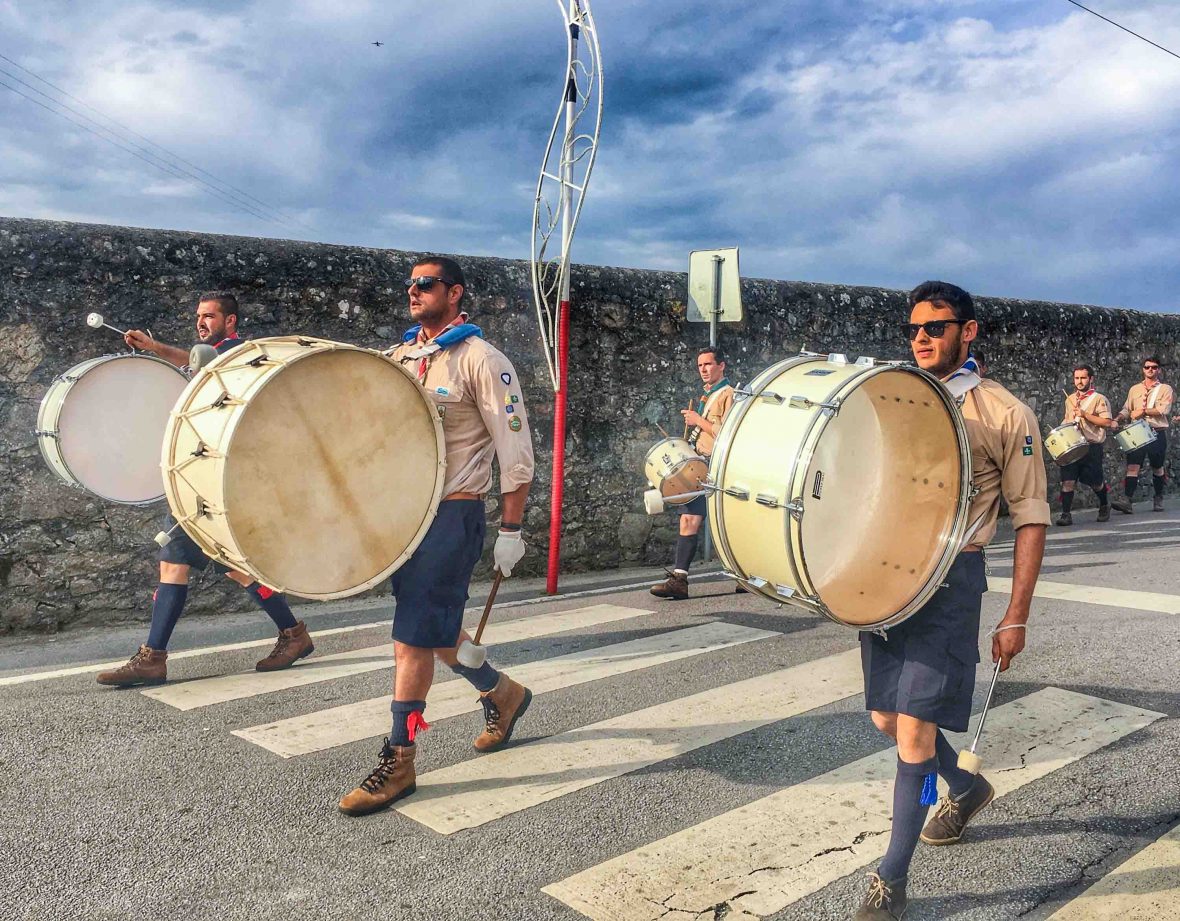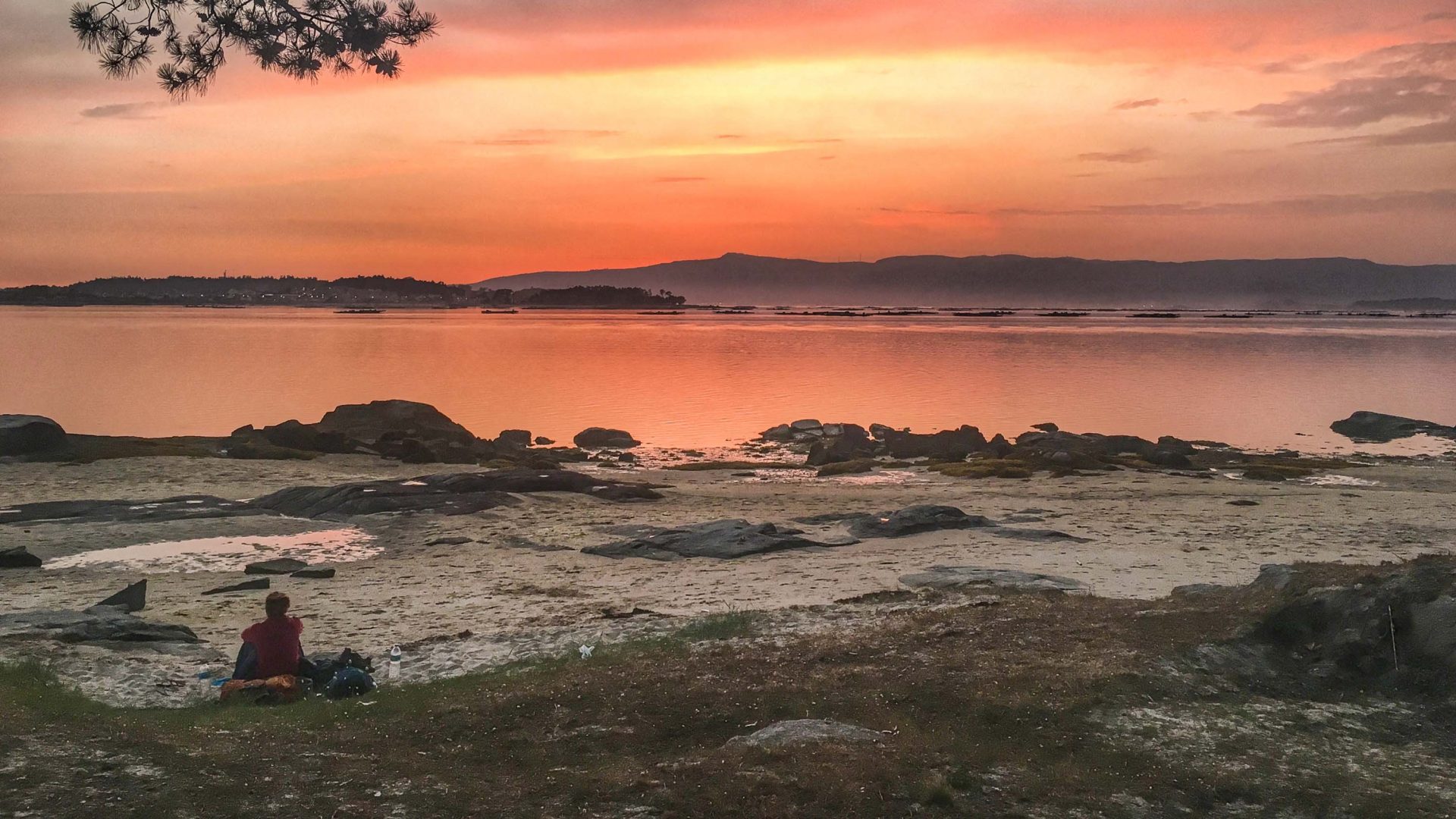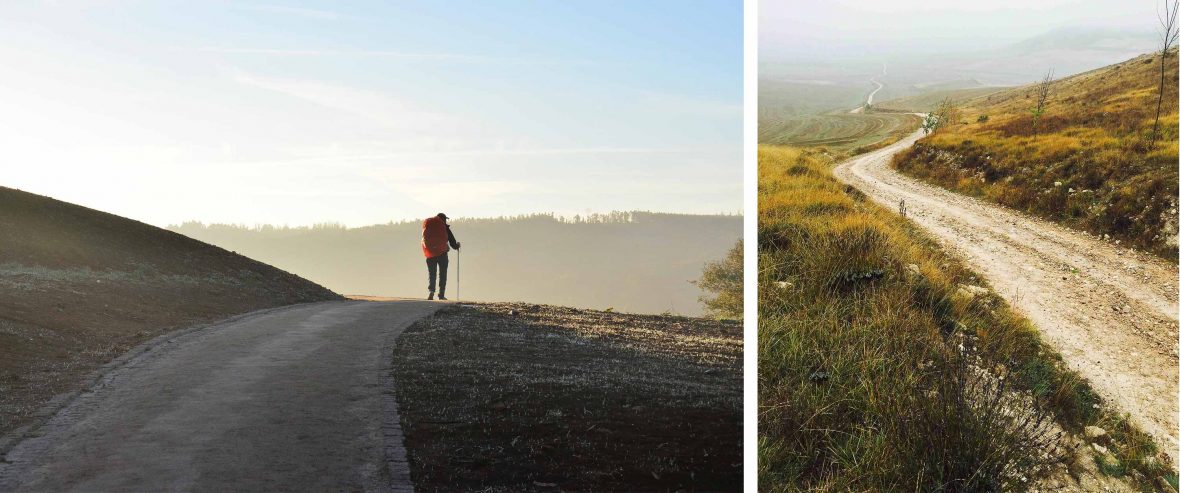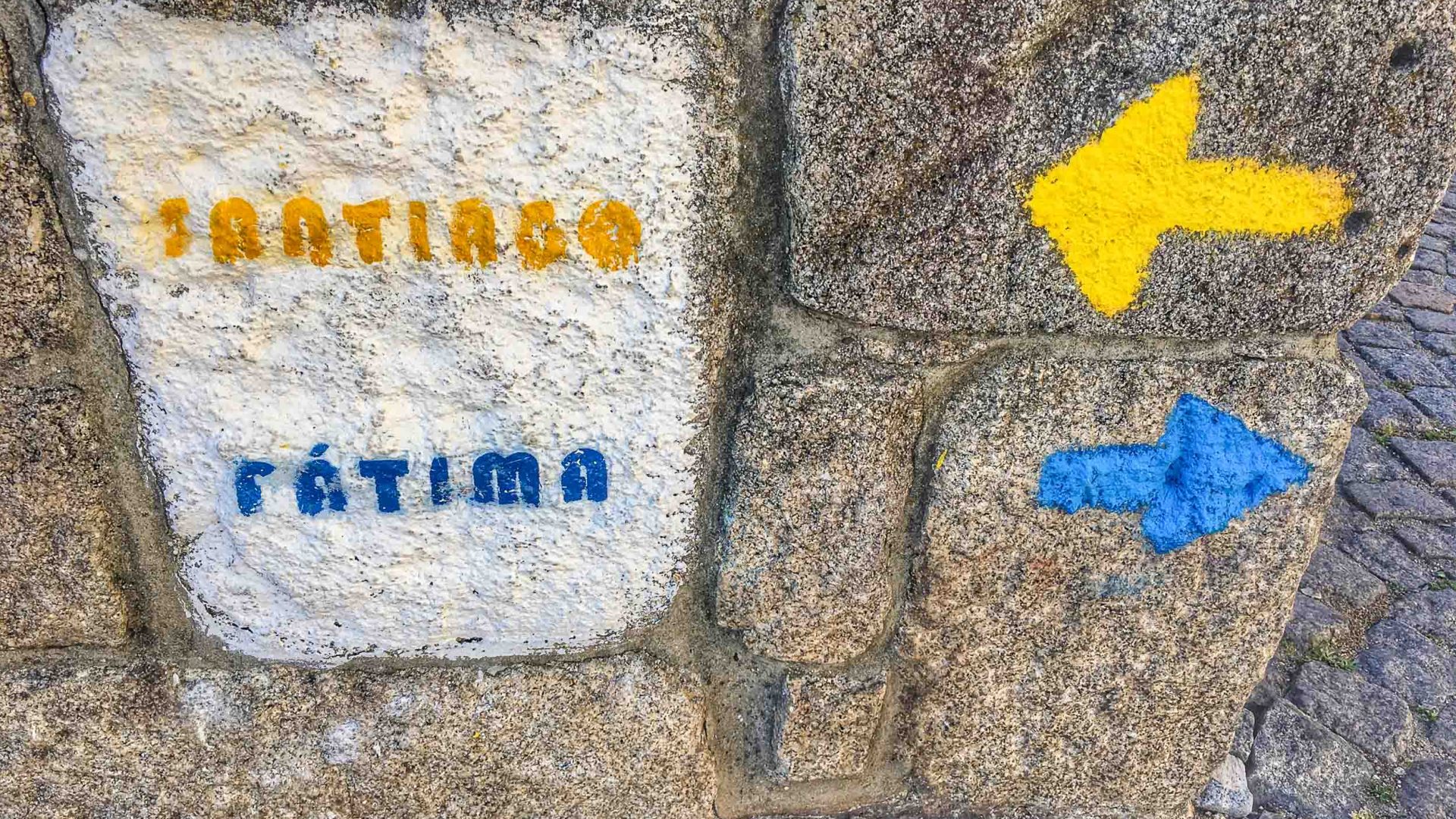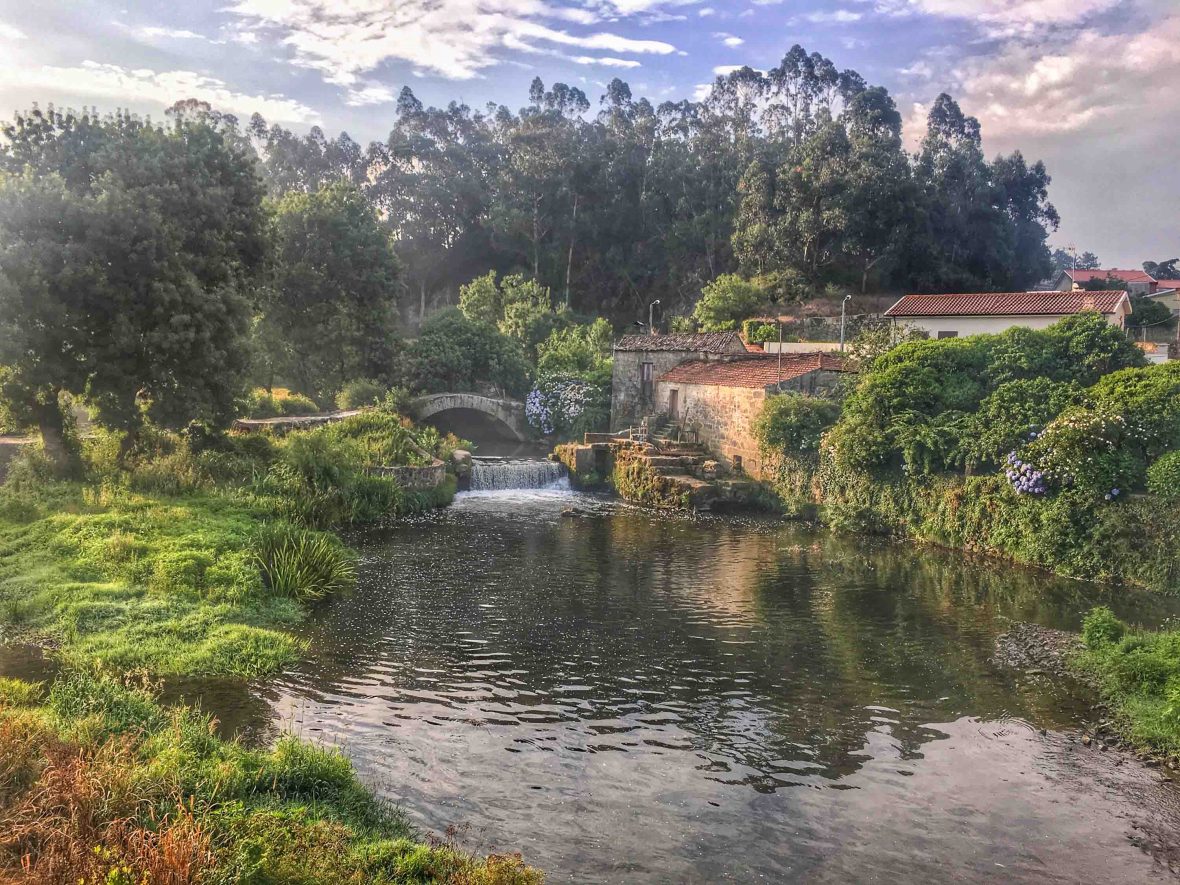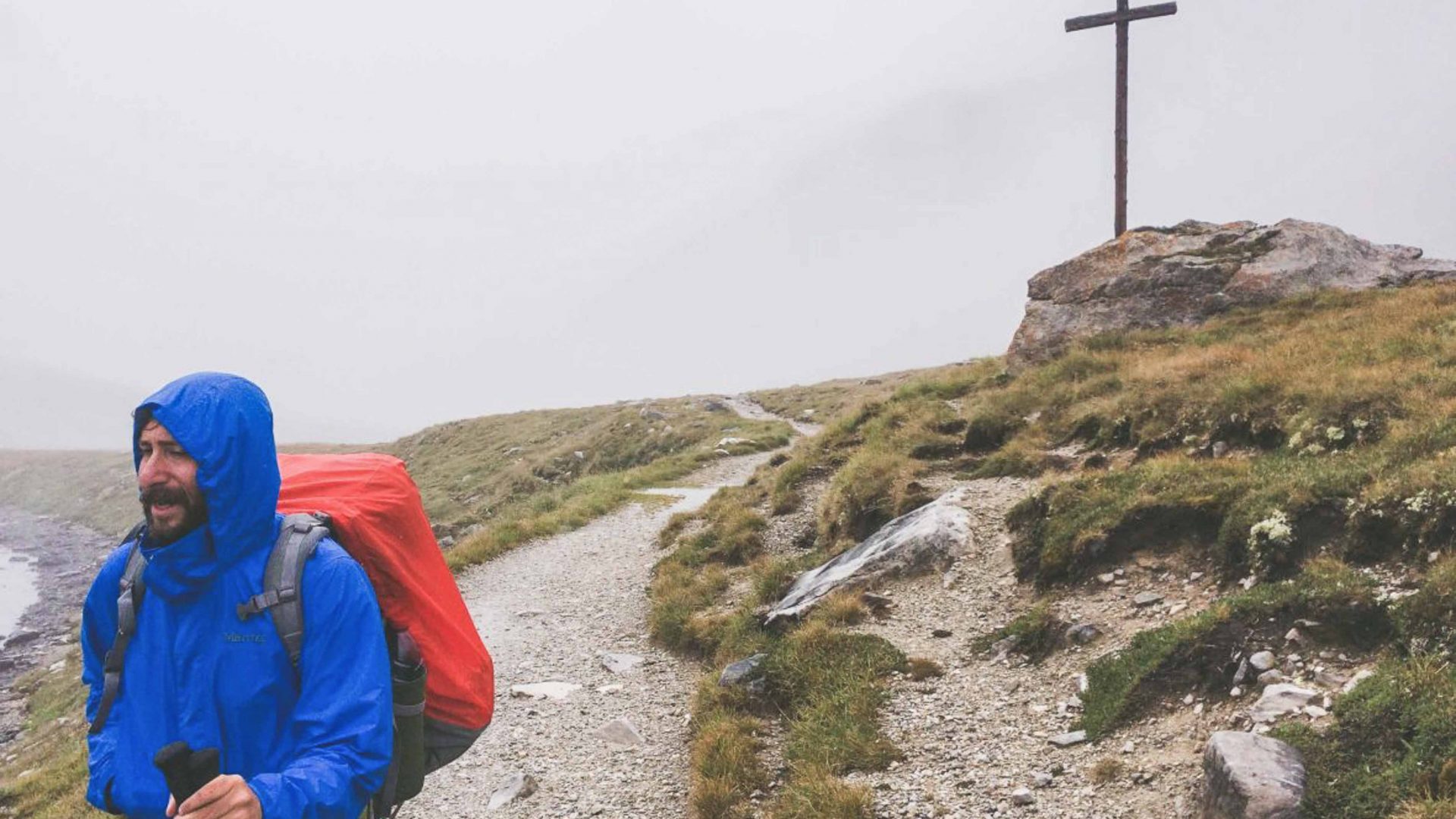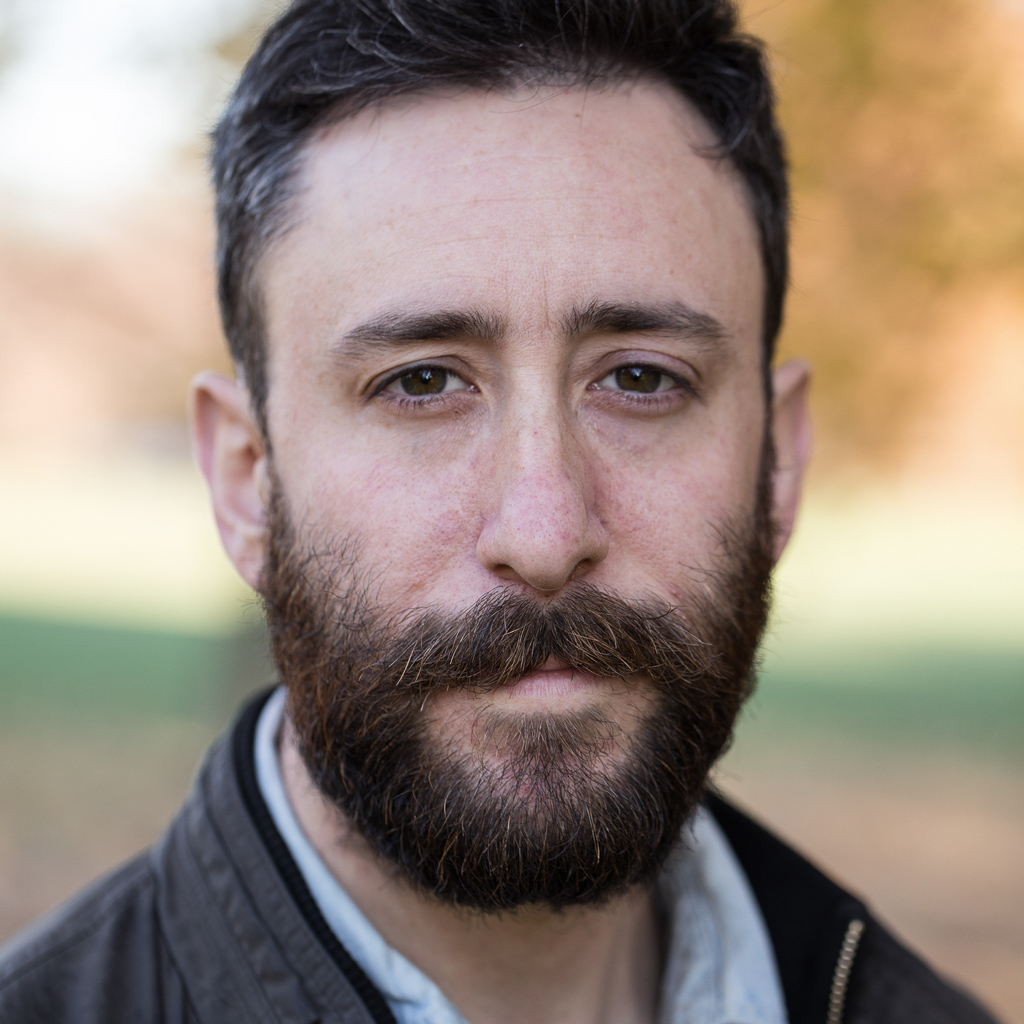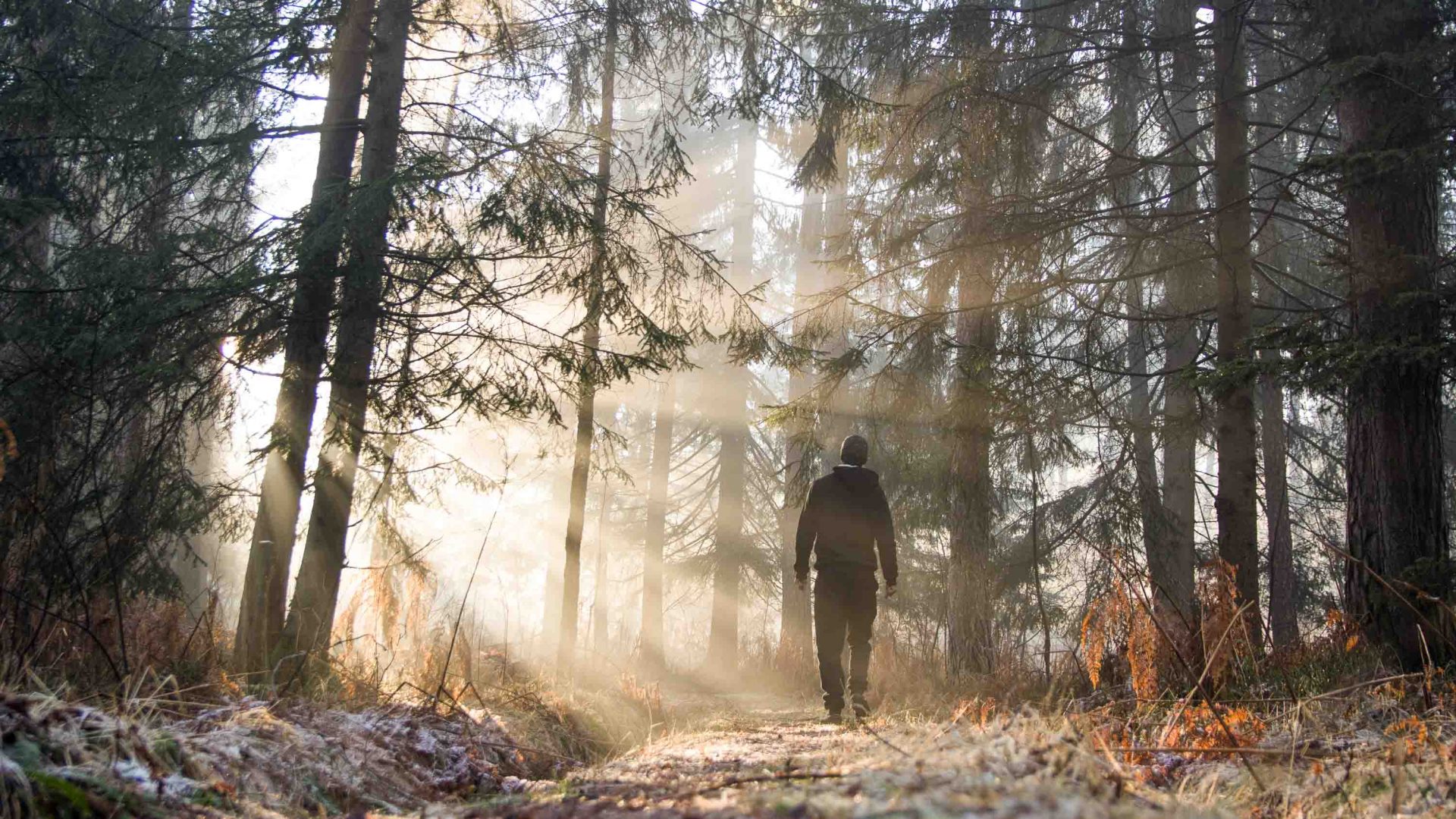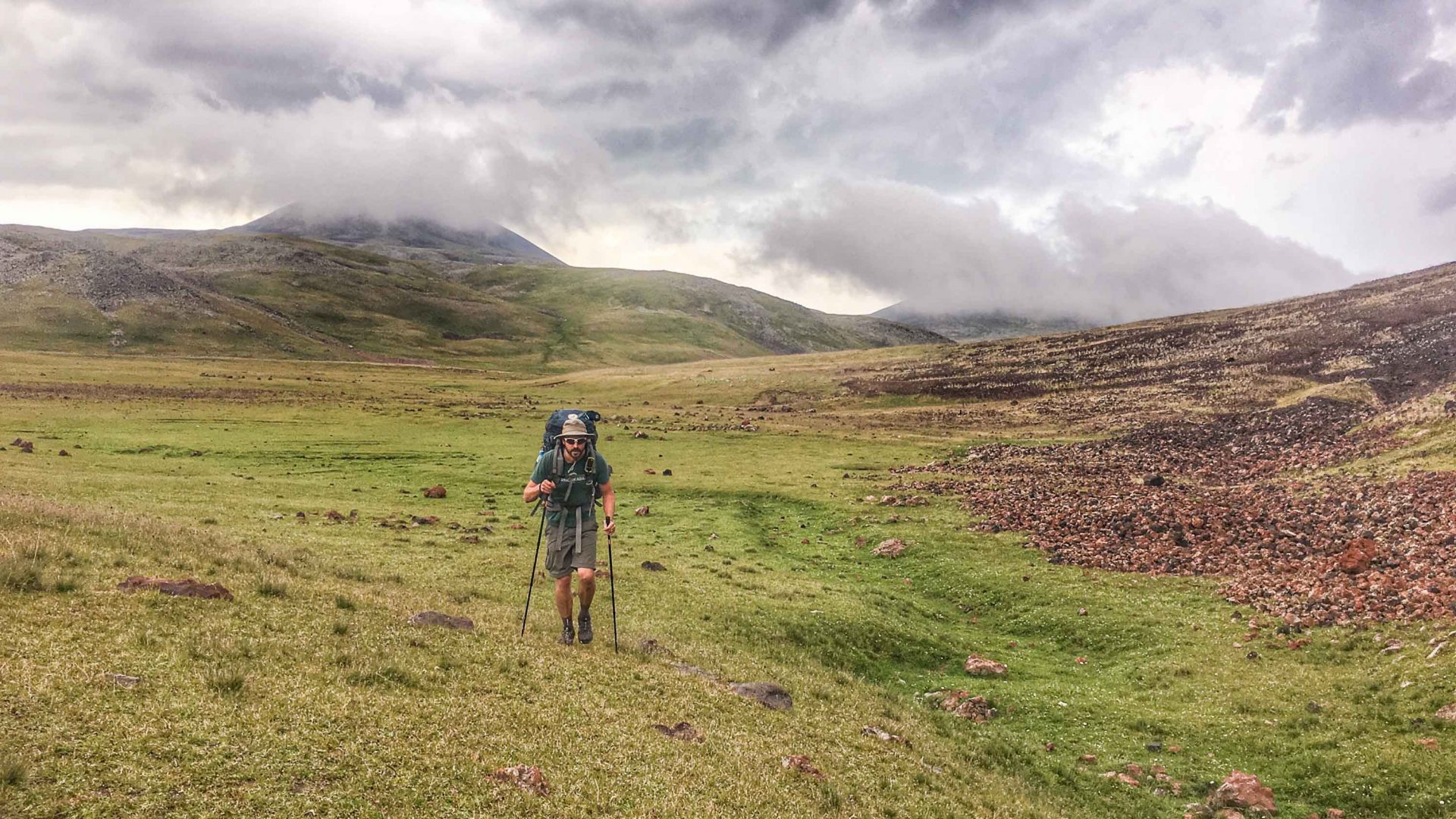
Most people who walk the Camino de Santiago take the popular Camino Francés (French Way). But a growing number of walkers are choosing the route less traveled. Leon McCarron joins them.
About a week had passed since I left Porto. At least, that’s what my diary entries told me—I’d lost track of the days long ago. On a walking journey, so much happens between sunrise and sunset that it’s joyously hard to keep track.
The cobbled streets of Porto had led me to Portugal’s west coast, then along undulating sand dunes looking out across the swell of the Atlantic. The yellow arrows—my guides and gurus—pointed me inland, through impossibly quaint villages surrounded by vineyards.
One morning—again, don’t ask me which day—a marching band of perhaps 30 young men and women streamed down a narrow country lane towards an elegant church atop a hill. It was a Saint’s Day, I was told (I wasn’t sure which one) and sardines were handed out all round.
A few hills greeted me as I crossed into Galicia—and Spain—and it was there, in the small city of Pontevedra, that my plans changed.

